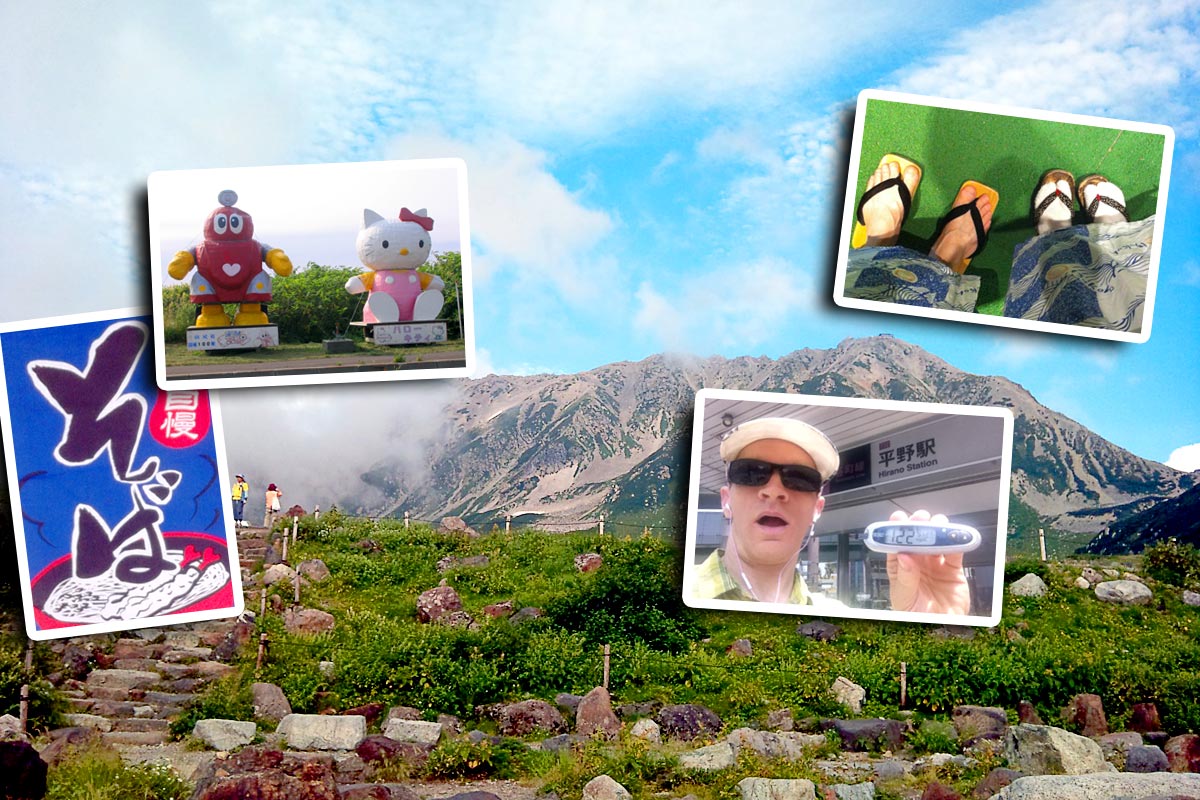
Fly into the rising sun
Faces smiling everyone
—Deep Purple
Japan is a super-modern country, and it has the facilities and infrastructure to accommodate any diabetic who wants to go there. Visiting Japan with diabetes is simple if you follow some simple tips.
The most important thing to remember when traveling to Japan, or anywhere else, with diabetes is that nothing bad will happen to you. If you’re reasonably prepared (which is easy) then you have nothing to worry about. Ignore your fears, take the leap, and go where you want!
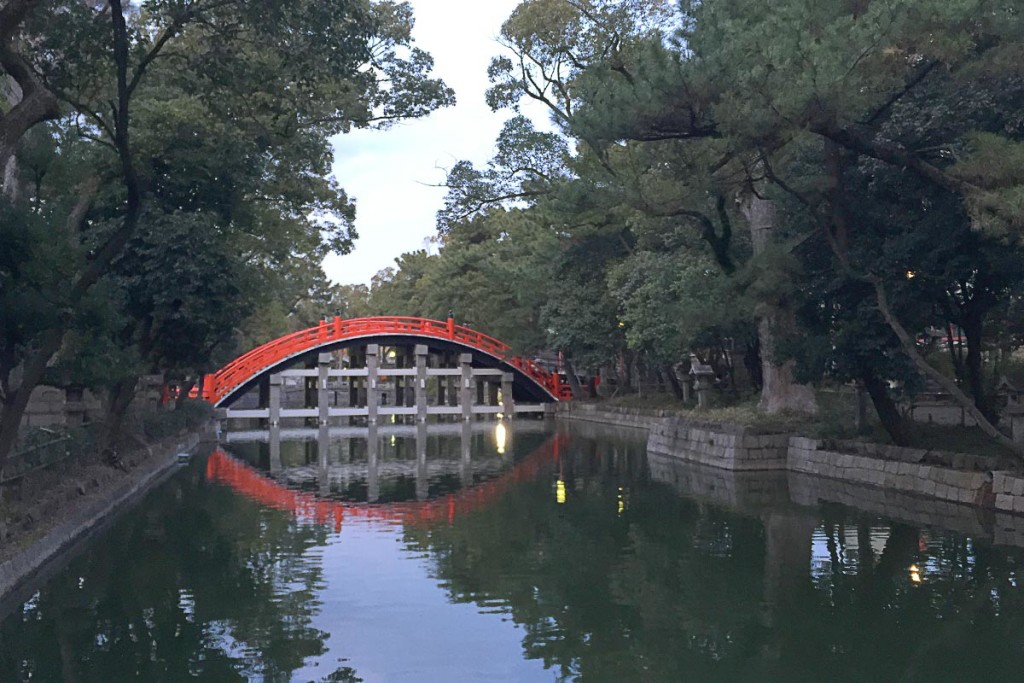
Food in Japan
Yes, rice and noodles are everywhere in Japan. The rice is mostly sticky white rice, while there are many types of noodles available. Most diabetics can eat these types of food; it just takes enough insulin to handle it. (Duh.)
How much insulin you need for the average bowl of rice in Japan depends on your diabetes regime and your own body. If you aren’t used to eating rice it may be tough to choose the right dose at first, but when you’re in Japan if you keep trying, then checking afterwards, you’ll quickly learn what to do.
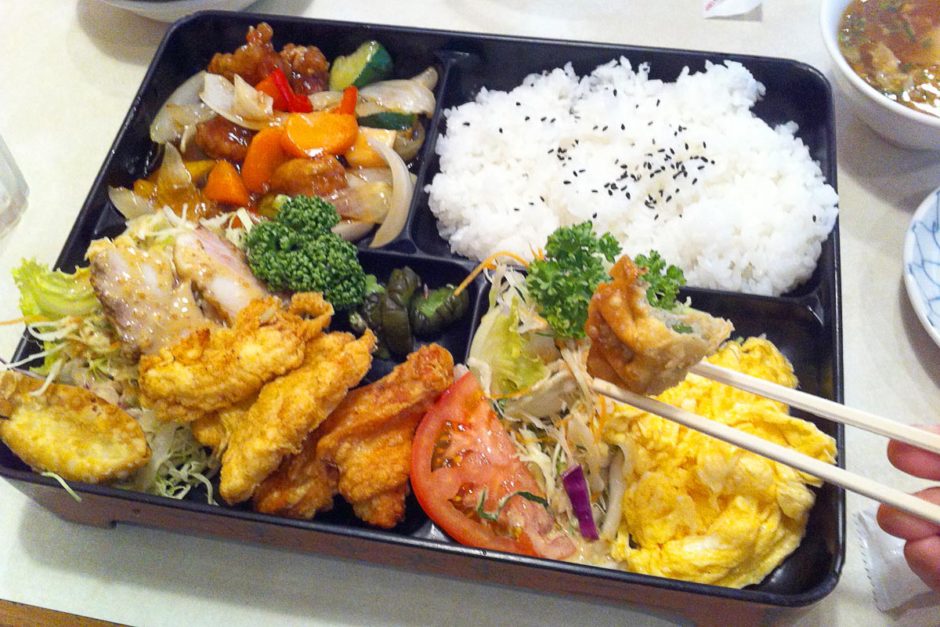
Chinese food in Japan: the rice is only half the carbs here.
Note that while rice is historically revered in Japan, it’s also a dirt-cheap and obvious side or “base” to many meals. Even locals will often skip most or even all of the rice that is served to them. Don’t feel bad if you don’t eat it all, even if you leave most of it. Nobody will think bad about you or say anything.
As for noodles, some popular types are soba, which is made from buckwheat, and udon, made from flour. They have different textures, can both be served hot or cold, and contain about the same amount of carbs. (The average serving size in restaurants depends on the meal – some noodle dishes are mostly noodles, while in others like tempura there will be less noodles and more of the main part.)
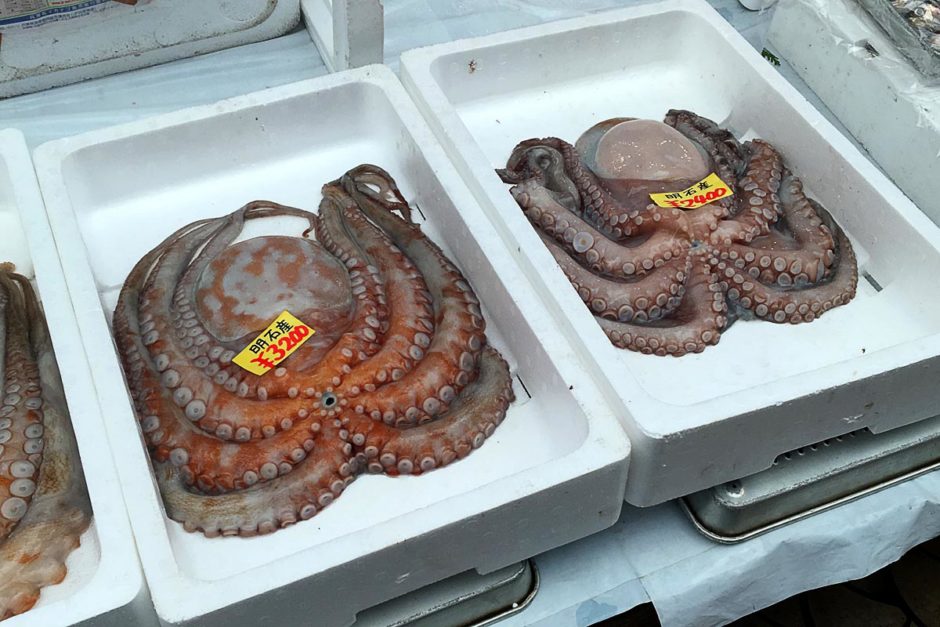
Food in Japan tends to be uniform, so once you’ve worked out how much insulin you need for, say, soba noodles at one place, it will be the same everywhere.
There are also many international restaurants all over Japan – Chinese, Italian, and Korean places are especially ubiquitous. Japan puts their own spin on these places, as do most countries, and are well worth trying. Fried Chinese dishes, as well as Italian pasta, will tend to be quite high in carbs. Korean food is often centered around piles of grilled meat and, while ultra-filling, may have relatively few carbs.
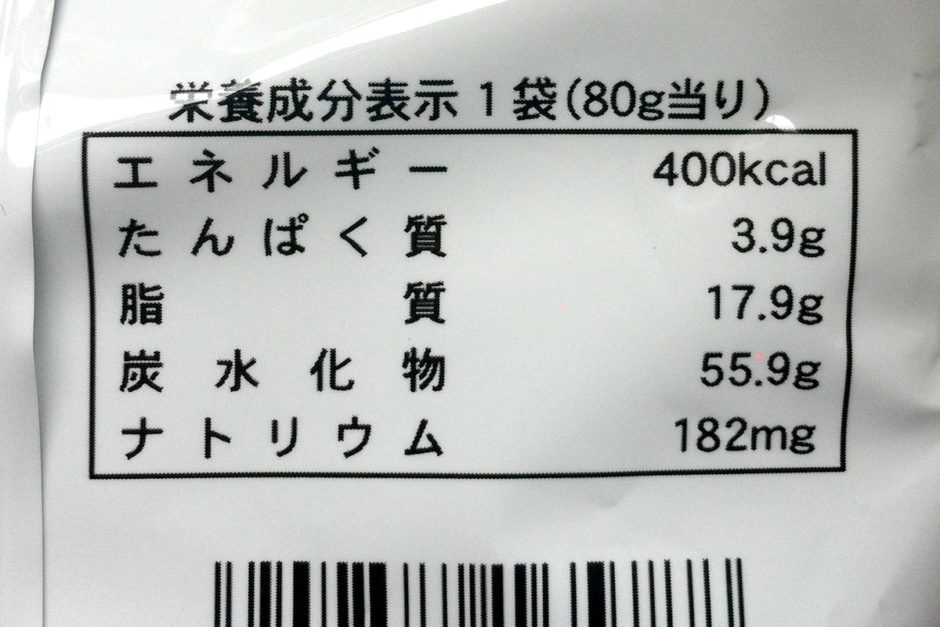
55.9 grams of carbs (炭水化物) in this package, which is 80 grams total.
Beware of sauces, no matter what type of food you’re eating in Japan: it’s often higher in carbs than it seems.
As far as store-bought food in Japan, there are supermarkets and shops everywhere. Nearly every train station has at least one, and the same items tend to be found in all of them. Always buy low blood sugar snacks when you can, just in case, and carry them around with you. Juices and cookies are sold everywhere and are easy to identify.
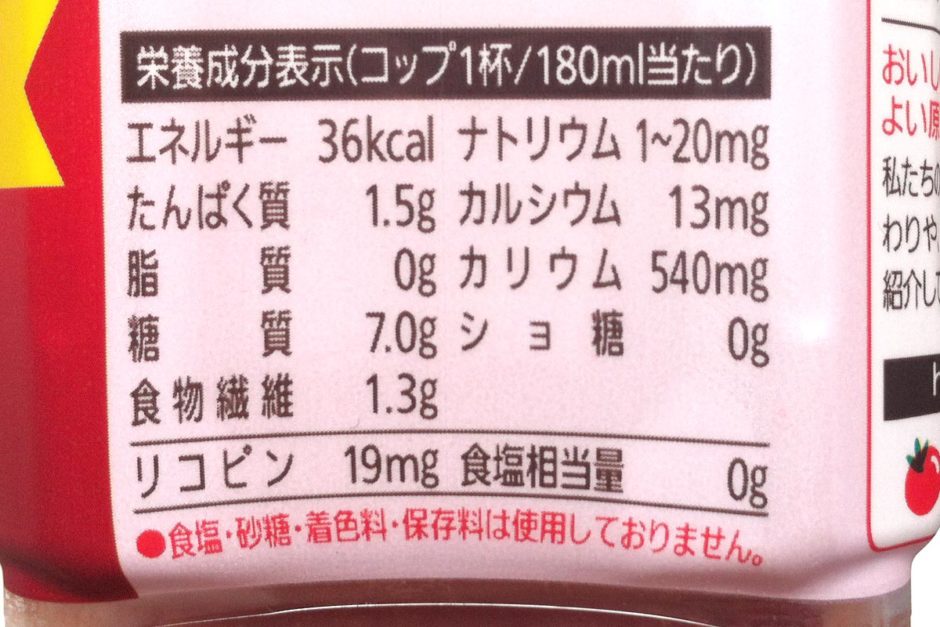
7 grams of saccharides (糖質) a.k.a. carbohydrates in 180 ml of this tomato juice.
Vending machines are on virtually every block of every town in Japan, but these are usually drinks only. They can be useful for low blood sugar situations but only if you know which drinks have carbs – many are teas and coffees that won’t help. Most packaged items and drink bottles in Japan have nutrition info on them but you won’t be able to see these in drink machines. Note that many drinks give their nutrition info per 100 grams of product; there are often 280 grams or so in small drink bottles so you’d have to multiply the carbs by 2.8 for the whole bottle. (Coca-Cola is common too, if you’re into that.)
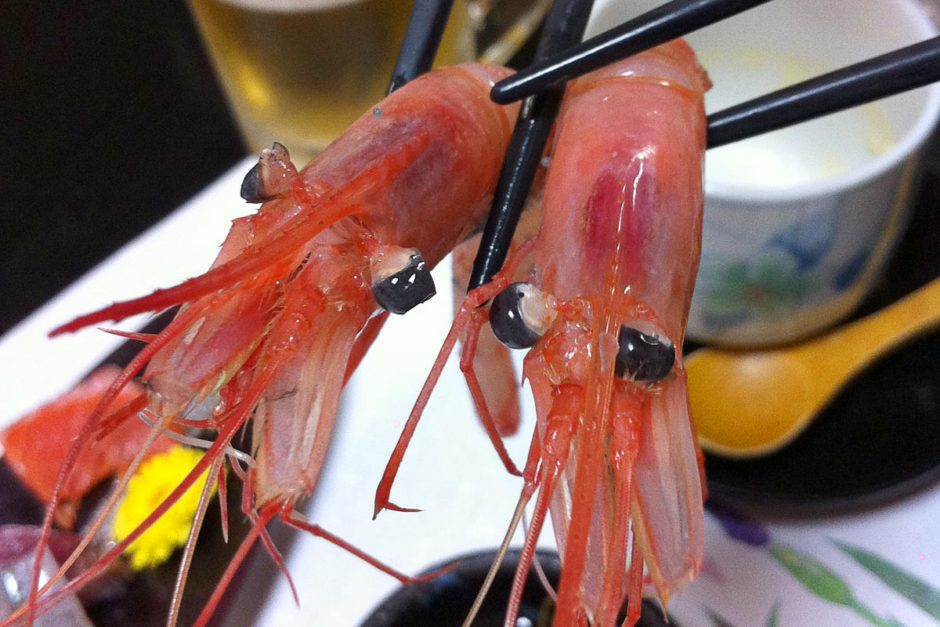
Trains in Japan don’t have any food services or drink machines, except for the bullet trains (shinkansen) which do. Drink machines can be found at the end of some cars, and someone will wheel a trolley through periodically with snacks and drinks on them.
The key to successful travel to Japan with diabetes is to check your blood sugar often, particularly when eating something new. You may be surprised by lows and especially highs, but if you learn the rhythms you’ll get the hang of it by getting more data (checking).
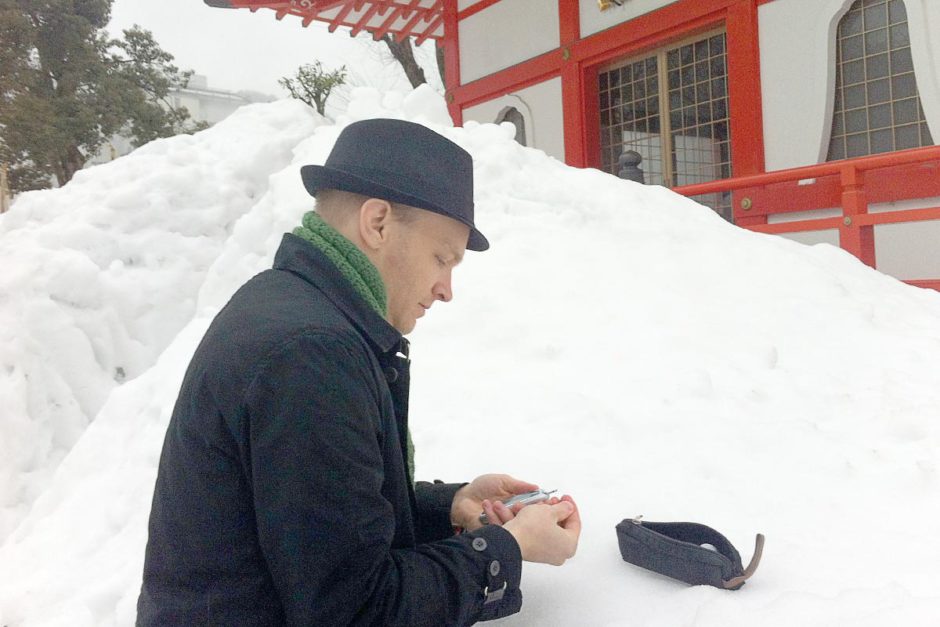
BG check at a snowy temple in Japan.
Pharmacies and doctors in Japan
Pharmacies are very easy to find in Japan, and will occasionally have English-speaking staff but often not. Doctor’s clinics too are common. To buy most diabetes-related stuff (insulin and test strips, for example) you need to see a doctor first. You can do so without Japanese insurance; you’ll pay full price but it should be pretty cheap.
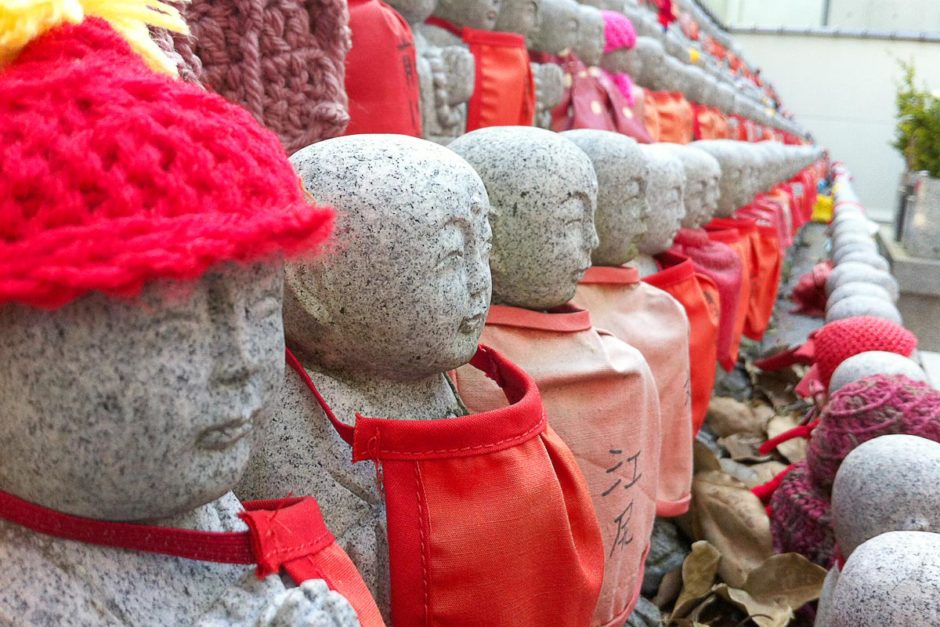
If they give you a prescription just take it to the nearest pharmacy (there is usually one nearby) and they’ll fill it for you. Prices for medicine aren’t any cheaper, so be prepared for the bill. Sometimes they’ll have what you need in stock, and sometimes will need to order it. Most things can be acquired within a day, possibly two, so give yourself time.
Negotiating all this without English can be tricky: Japanese businesses don’t assume anything about you and will wait to understand exactly what you need. It might be best to ask if they speak some English or take a Japanese speaker with you. Once everything is understood, you’ll get what you need.

But the easiest way to avoid all this is to just bring what you need with you. The best way to handle this is to figure out how much insulin, test strips, pills, etc you’ll need for your time in Japan, and then double it, splitting up your supply in separate bags. Keep some in your hotel or guesthouse room, and carry plenty with you in a day pack. Authorities are knowledgable about diabetes; you can bring an English note from a doctor explaining that you are diabetic and you need these things, if you wish.
But wherever you get your stuff, don’t go outside without it! You should get in the habit of always having everything with you in Japan.
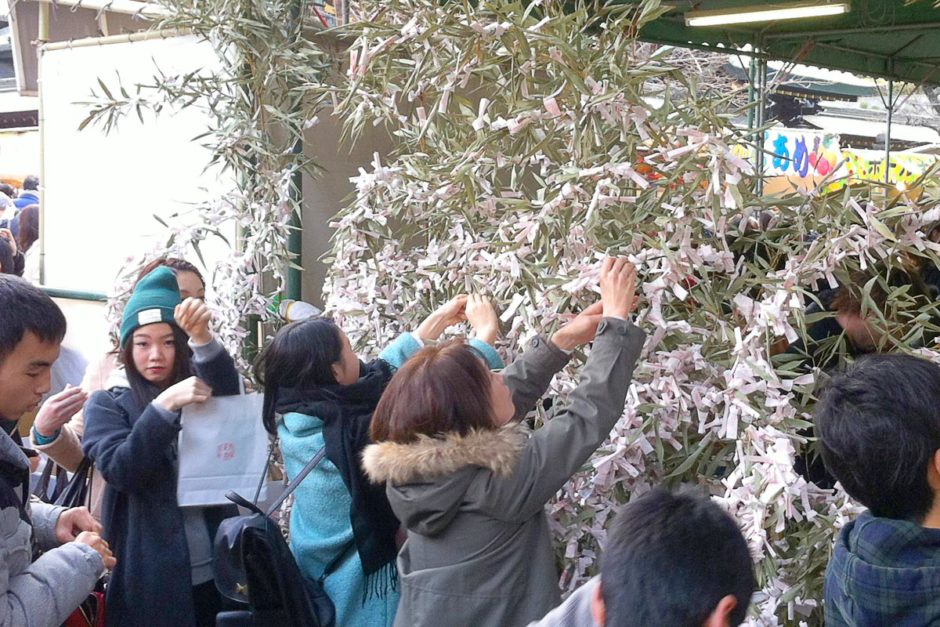
Tying prayers to trees on New Year’s Day.
How to speak Japanese – for T1Ds
If you need to speak to someone about diabetes stuff in Japan, you may well get lucky with a little English. Medical professionals will have heard some English, even if they say they don’t. (“I don’t speak English” often means “I don’t understand and speak English perfectly” in Japan, but it doesn’t mean they’re totally clueless.)

But if trying simple English words or showing off your insulin or blood sugar meter doesn’t work, try these phrases:
- diabetes – 糖尿病 (“tone yobe yo”)
- insulin – インスリン (“een su reen”)
- blood sugar – 血糖値 (“ket toe chi”)
In addition to these phrases – and your smiling and patience and helpful gestures – you may want to wear a piece of medical alert jewelry that mentions your diabetes. It is extremely unlikely that anything bad will happen to you in Japan (or anywhere else) when traveling with diabetes, but it can be good peace of mind and a nice backup just in case.
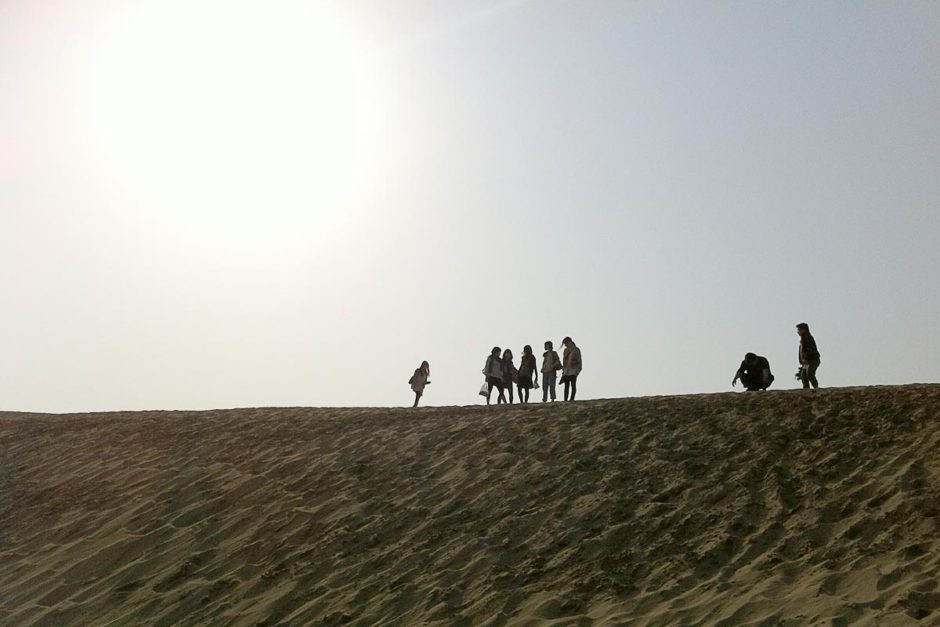
Story: My T1D in Japan
I’ve had Type 1 diabetes since I was 9, and I moved to Japan when I was 30 to teach English. I’ve been here off and on ever since, and over the years I’ve never had anything serious happen to me or my diabetes stuff here.
In my first couple of years here, I was not in the national Japanese health insurance system. I would just go to a tiny local clinic in my neighborhood; the doctor spoke no English but on my first visit looked up words in a Japanese-English dictionary he happened to have.
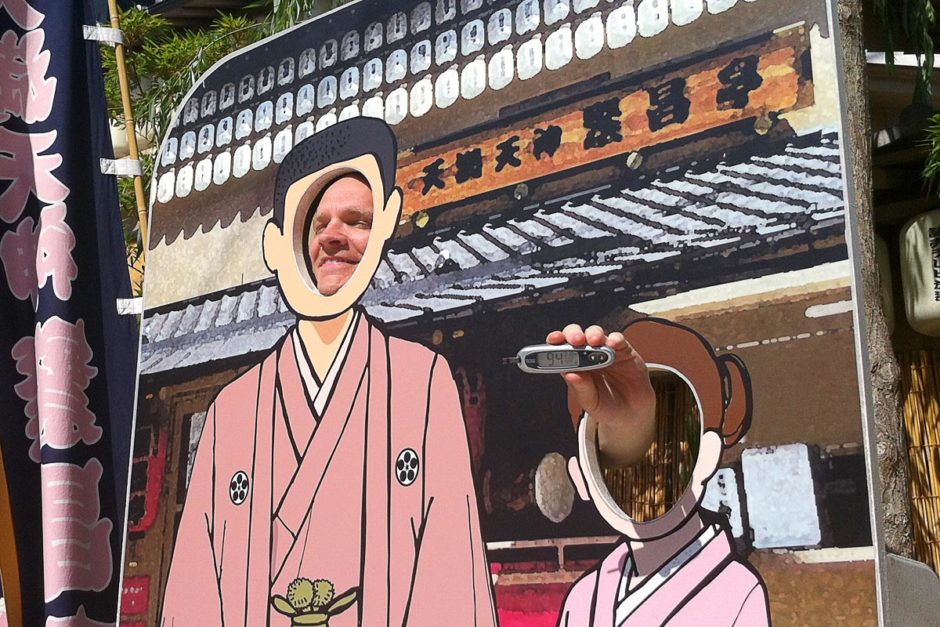
Once he had worked out what I needed – not a consultation, just a prescription for Humalog and Lantus and OneTouch strips – he wrote out the prescription. I took it to a nearby pharmacy, also very tiny, and they ordered it all. I picked it up in a few days.
After that I’d stop by the doctor again every couple of months and refill everything. Without insurance the “consultations” were about $20 and the supplies were the same price as they’d have been in the U.S.
Finally I got on the national health plan. It has greatly simplified everything and made it overall a little cheaper.
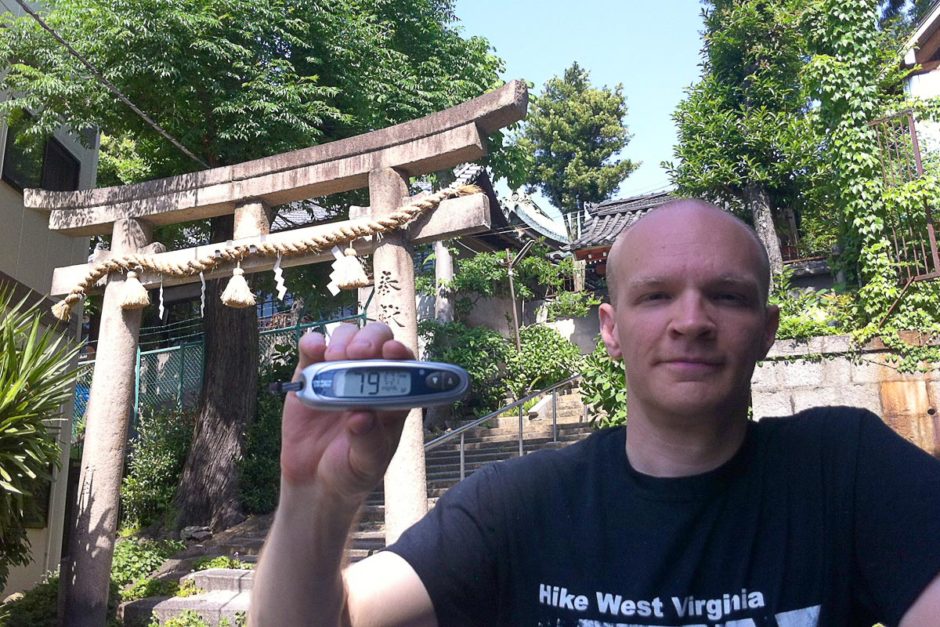
As for food, high blood sugars are part of the deal sometimes when eating in Japan, especially when eating new things you’re unfamiliar with. The good news is that junk food here – cookies, doughnuts, potato chips – are generally less heavy and smaller than overseas. They can wreak a lot less havoc on blood sugars; you can indulge in sweets and pass through with no ill effects on your diabetes whatsoever if you dose right.
Restaurants won’t be particularly accommodating for you – they serve what they serve, and that’s that – but with some experience and some insight into the food you can figure it all out fairly quickly. Try not eating the entire dish until you figure out how your blood sugar does with a smaller portion.
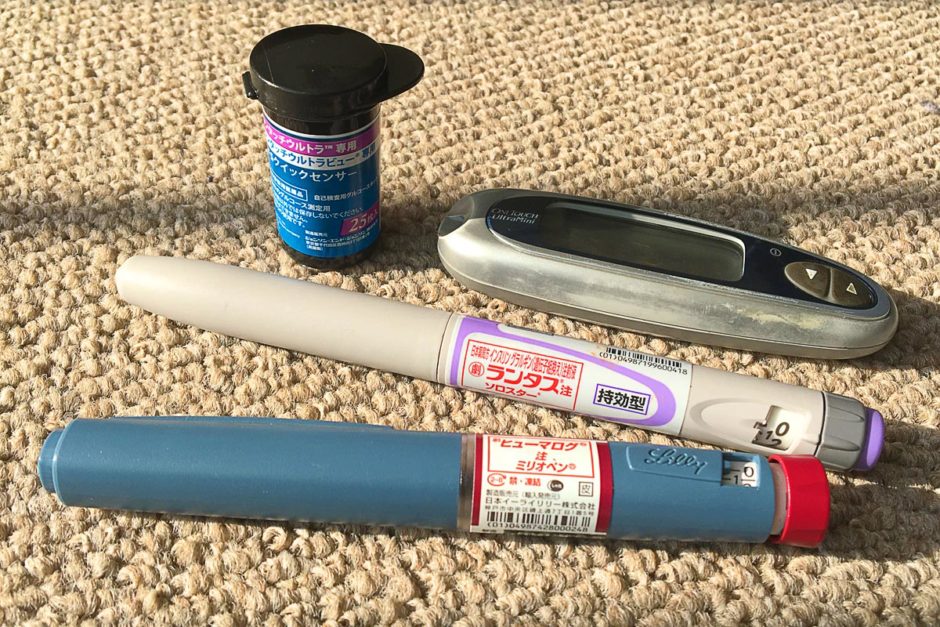
After several years in Japan with diabetes I have found that if you’re diligent, blood sugar can be controlled well even in the face of the often heavy carbs. Have the right attitude – check and adjust – and enjoy Japan!
Traveling in Japan often includes a lot of exercise: train stations have escalators but stairs are sometimes easier (less crowded), and there can be long hikes to your bus or your hotel if you don’t feel like taking a taxi.
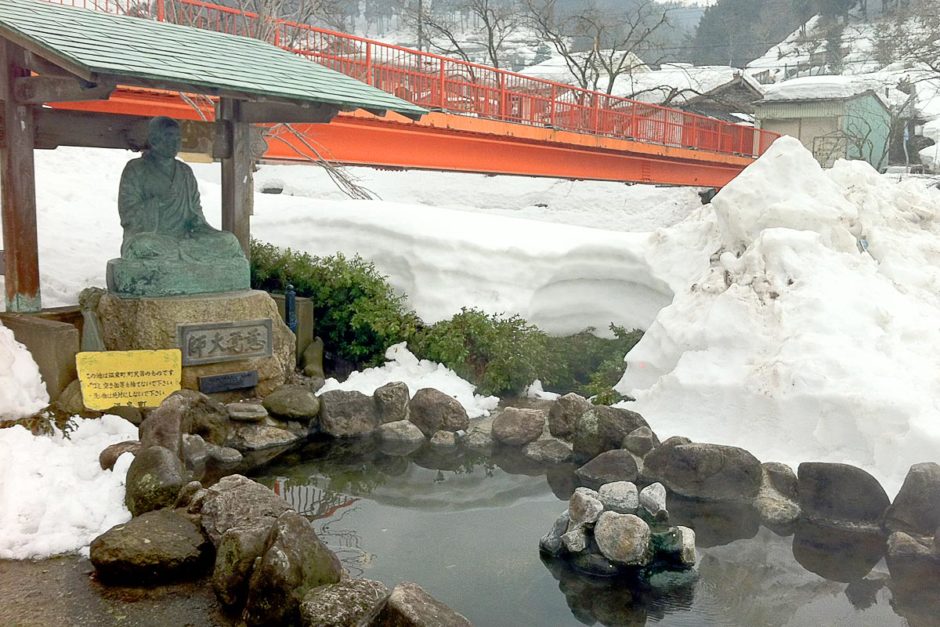
Japan is a mobile society, and people don’t mind walking. Public transportation is excellent, but doesn’t remove all the effort; you’ll still be grunting up and down stairs and strolling long distances at some temples and parks, though (slow) elevators are increasingly popular. Factor this into your meals, check often while you’re out, and remember always keep that low blood sugar food on you at all times.
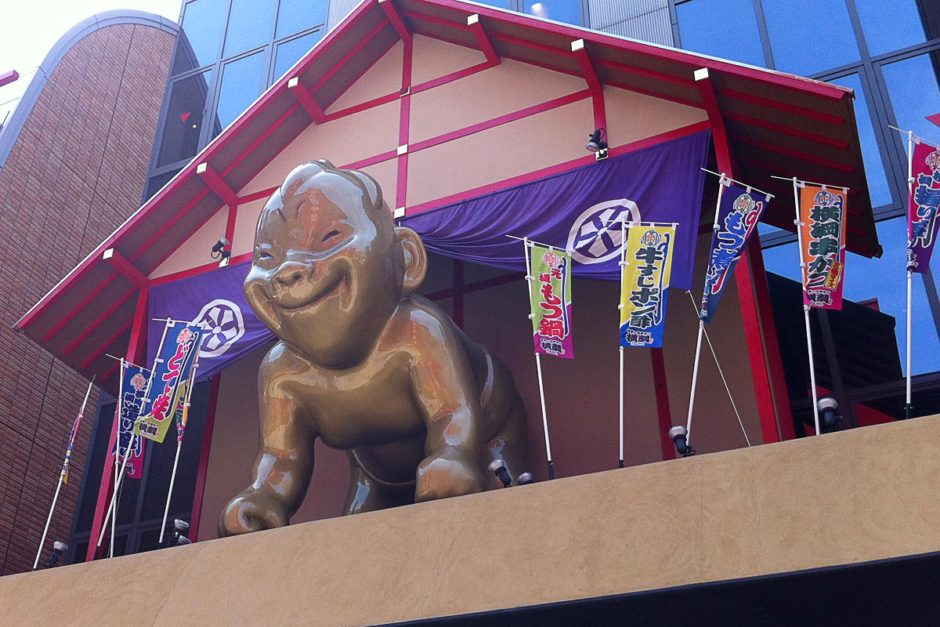
Billiken peers out onto the pedestrians from a building near Tsūtenkaku.
Your trip to Japan
If you have visited Japan I’d like to hear your experiences, whether or not you have diabetes yourself. How were the food and the tourist sites? How did you communicate with people?
If you are thinking of visiting Japan and have any questions, let me know that too. It’s a nice and modern and friendly country, and everything you need is available pretty much everywhere. Remember:
You can go anywhere with diabetes!
Thanks for reading. Suggested:
- Share:
- Read next: Tips for traveling to China with diabetes
- News: Newsletter (posted for free on Patreon every week)
- Support: Patreon (watch extended, ad-free videos and get other perks)

Support independent travel content
You can support my work via Patreon. Get early links to new videos, shout-outs in my videos, and other perks for as little as $1/month.
Your support helps me make more videos and bring you travels from interesting and lesser-known places. Join us! See details, perks, and support tiers at patreon.com/t1dwanderer. Thanks!

Thank you so much for these tips, Jeremy! I am also a T1D since 5 years old and haven’t yet had a problem traveling with diabetes! Am heading to Japan next summer with my 2 kids and hubby and was looking for any tips regarding getting into Japan with all my supplies. (Most countries never even ask for a doc note but there’s always a first!)
I appreciate the info you’ve provided! Keep up the epic work!
Andrea,
Thanks and you’re welcome!
Getting into Japan with diabetes supplies shouldn’t be an issue at all. If you are traveling with just a few weeks’ worth of supplies I can’t imagine anyone will care. You could bring a note from a doctor in English explaining that you’re diabetic and need X and Y supplies. Diabetes is well-known here, certainly to airport staff. I’ve come and gone countless times with months’ worth of insulin pens, etc and nobody ever cares.
Where are you visiting in Japan? I think you’ll have an excellent time!
I’m going to Japan in a couple months, Osaka first. I read something online about syringes. I inject lantis from a vial and have a cartridge pen for humalog. Will the syringes be a problem – it was on the general info on ministry of health, I take it the pen type are no problem as you have those pictured. I also use a pill for neuropathy and lisinorpil for kidneys. Do I need to fill out the from if it’s only for ten days it appeared not on their site. Managing my sugar isn’t to hard for me and have some idea of portion sizes already. Thanks!
I’m traveling myself with the same situation, did you have to do the special application?
[…] READ MORE: TIPS FOR TRAVELING TO JAPAN WITH DIABETES […]
Hey Jeremy,
My name is Benjamin I’m form Germany and I want to do a “Working Holidy” in Japan. I have T1D for over 25 years. The reason why I ask you about Japan is just simple. I looked through a lot of formus, but there wasn’t saddly any satisfying answer and so I landed here. So here are my questions. What do I definitly need to do to get my medical supply there for a year? Do I have to sign the health insurance in Japan and does it cover the meds for some %? Is it expensive, I pay here about 20$ for one pack Lantus and Actrapid. The rest covers my insurance here.
Hi Benjamin,
The Japanese health system is very good. I *believe* this is true but I don’t know everything about it:
You don’t need health insurance to get your supplies. But you do need a prescription, so you have to visit a doctor each time. Doctor visits are cheap even without insurance.
Insulin/medicine is available here and would cost about the same as Germany. But if you have Japanese insurance you only pay 30%. Usually worth it for diabetics I think. Certainly for BG strips if you use those!
The cost of insurance I’m not sure about. It’s based on your previous year’s salary (and maybe other things, I don’t remember). If you’re new in Japan I don’t know how they calculate it. It would probably be much cheaper to sign up for it anyway.
My first 3-4 years in Japan were without insurance. I just paid full price for everything but I could get everything I needed. That was 10 years ago though. I don’t know if it’s the same but I think so.
Hope this helps! Do you know where in Japan you’re going?
If you are staying over 3 months in Japan, it is mandatory to enroll in public health insurance. See more info here: http://www.takemetojapan.com/insurance
Yes, it is calculated on your previous salary of last month and age; so is very cheap for students(about 2,000 JPY/month) which is about $20/month.
It covers 70% of your medical bills, so you only need to pay 30% each time.
You need to go to your local town hall to sign up. You will receive a National Health Insurance Card, be sure to bring it to any appointments. Hope that helps! 🙂
Thanks for the info Sayaka. I used to know of people staying and working in Japan for a long time without enrolling in the national health system. Is it a newer law that 3+ months people have to enroll?
Sorry for the late reply.
Yes it helped me, thank you so much.
It’s not decided where I’m going but I probably start at first in Tokyo. Kyoto would be nice too especially for sightseeing. But not sure, maybe I end up somewhere else.
Do you have some must see places in Japan?
Kyoto, definitely. The Peace Park and museum in Hiroshima is a must-see. The rural areas, especially around Gifu but anywhere really, are nice if you can find a traditional Japanese inn (ryokan) to stay in. They often have hot springs, free use of yukata (kind of pajama robes) to wear around the place, and a large dinner/breakfast. Very relaxing and very Japanese!
Hi Jeremy,
We are traveling to Japan next week for the second time as a family and me and my son are both type 1. We bring all supplies needed for the trip but our main problem is/was that we didn’t know how where to get our containers emptied or get new ones. We tried at a clinic but they didn’t understand. I did not see any answers on the net. Do you have tips for us? Thank you so much!
Greeting from the Netherlands
Nathalie,
Different locales have different guidelines; often you can take things to where you bought them.
As tourists I believe you could take your stuff to a pharmacy. If you can’t get your point across, try the word “gomi” which means trash. Smile and be friendly, it seems to help communication somehow. Also note that there may be only certain pharmacies that can do this, but any of them should be able to at least point you in the right direction.
Have fun on your trip! Where are you going in Japan?
Can you comment on a few of the common types of major carbs (rice, different types of noodles) regarding which seem to be better choices? Do you find udon noodles are better than white rice for your blood sugars? I will be travelling for most of December in Japan and want to be able to make good choices when possible, but I am so accustomed to eating whole wheat products in the US, and i’ve read they aren’t widely available when eating out in Japan.
Hi Kat,
I have been twice to Japan now and my diabetes values are the best there! You even have to take care of hypos because the food is very healthy and portions are maybe smaller than you’re used too. Rice is not a problem, Japanese rice and ramen has a different glycemic index. It’s very hard to find whole wheat anything. So just enjoy and measure a bit more. And take your own sweet and low, also very rare. Most western based food has lots of sugar in it was my experience but is was easy to keep my carbs within desired range. If you want some more advise you can contact me personally as well.
That is very good to hear! I was worried that I wouldn’t really be able to enjoy some of the great food while on vacation without having terrible values since rice and noodles are so big there. I will definitely bring some splenda with me just in case, but i’m hoping to enjoy lots of great tea while there and I generally don’t sweeten (like i do with coffee).
Hi Kat,
I agree with Nathalie, wheat and bread products aren’t the norm here in Japan but rice and noodles aren’t a big problem for blood sugar. Even locals don’t always eat all the rice they’re served so don’t feel bad about eating only half or whatever. I haven’t found udon/soba noodles to be too different than rice, and in fact the sticky white rice poses little problem once you know how to count it. (Exercise, even some walking, after eating makes a big difference too, but that’s not specific to Japan!) And things like desserts and snack foods generally have much lower fat and sugar content than their Western counterparts, perhaps half.
Of course there will be high BGs here – sauces can be deceptively high in glucose, for instance. I don’t use sugar or any sweeteners in coffee or tea here so I don’t know about that but I would imagine that Nathalie is right; I haven’t noticed any artificial sweeteners around. Maybe in supermarkets…?
Jeremy
Hi, Jeremy
There are some artificial sweeteners in Japan, “Rakanto”(ラカント), “Palsweet”(パルスイート)or so on. You can get them in supermarkets.I am a Japanese and I live in Osaka. I am not T1D, but one of my acquaintances is. I was so surprised that there are few information about it in English in Japan. Now I am thinking about what I can do for the T1D people who want to come to Japan. Thank you for reading.
That’s interesting, Yuko. Thanks for the info about sweeteners in Japan. I guess they’d be in the sugar section?
Yes,you can find them in the sugar sectionï¼
How can I contact you Yuko ? Do you have any email ? I need more information about T1d in Japan
Hi , i have type 1diabetes managing with insulin . I would like to relocate from india to japan near to kobe for work long term . I been to japan many times , those time i carried insulin along with me . Where i can find the english speaking doctor and insulin . I want to disclose to employer iam diabetic . Your advice will helpful for me .
Hi Anand,
I found my doctor just by doing a Google search for “diabetes osaka clinic” (or something like that). She’s near Kobe actually, a doctor who specialized in the heart, but has an interest in diabetes (according to her website), *and* speaks English. Similar doctors may be found in lots of places by doing a search. Good luck!
Jeremy
Anywhere in yokohama where can purchase cheaper test strips that you know off. They sell otc now for tumero japanese glucose meter
Cherie,
Hi, that’s a good question and I am afraid I have no idea. I’ve never used a Japanese meter per se, and I use the national health system to get supplies so they’re pretty cheap. I would imagine though that it would be hard to find medical stuff in Japan for an unusually low price. Maybe Amazon Japan would have something but it can be unreliable.
Let me know what you find. Thanks!
Dear Jeremy
I use insulin pens. In Europe it is no problem to give my injections in public (for example in restaurants). Is that acceptable in Japan.
Thank you for your advice.
Pris
I was just there in December and use pens as well. I tried to be discreet, but never had an issue in any restaurant.
Thank you, Kat.
Pris,
I have never had a problem in Japan. But yes, do be discreet about it. There could be people with needle phobias or whatever around you. (Never found that either, but I know some people don’t want to see injections when they’re trying to eat!)
Jeremy
I also had no problems in 6 months there.
Hey guys,
I’m a T1D as well and moving to Japan soon. Last time it was only for 6 months, so I could carry all my supplies from home. This I time it won’t be possible. Can anyone help me out with what kind of insulin I can get down there? Right now I’m using FIASP/Novo Rapid and Lantus. I think I’ve read that you can get Lantus right?
Would appreciate all help I can get.
Michael
Michael,
I used to buy Lantus in Japan all the time. I switched to Tresiba, but they’re both widely available. (They even make both with full Japanese decals, so they’re not just foreign imports.) I’m pretty sure you can get NovoRapid here as well. Most pharmacies will actually have this stuff in stock already, or can order it and get it within 24 hours.
You will have to have a doctor’s note though, so you’ll need to stop by a doctor first. Generally you won’t need an appointment, will be able to communicate what you need in a combination of smiling, simple English, and patience. And even without insurance, such a visit should be very cheap. Sometimes they’ll ask you if you want a blood test done; you can probably just explain that you don’t want it (if you don’t).
Personally I also use Humalog so if you’d like that it’s easy to get. The system works well here and everything is easy to get, don’t worry!
Jeremy
Thank your very much Jeremy. Good news. Do you know any website where I can find some information about available insulins?
I’ve read some articles about prefilled pens are most common in Japan. Is that true? I would like to keep mine, where you can change the ampule. Is it possible to get those?
Also I’ve already contacted a doctor in Japan who can speak my native language. He told me that the Freestyle Libre has become available about a year ago. Do you have any information about that? Refund from the NHI? Buying it at your own costs?
Best regards,
Michael
Michael,
I’m afraid I don’t know of such a website; I’ve always just gone and asked at a pharmacy 🙂
About the alternative pens, I’m not sure about that either. My guess is that yours would be available too, but I’m not sure.
If a doctor told you that the Freestyle Libre is available, that probably means that it’s available through the insurance system. Again I am not sure but that’s what I would suspect.
Sorry I can’t be of more help. When you find out more please let me know! Thanks.
Jeremy
Ok, thx a lot again. I think I‘m gonna be fine there and just see what the Japanese products will be.
Maybe I post again in October, if I have some more answers by myself.
Hey,I was going to travel for the first time out side of the u.s. to Japan. In general,I was curious if you had any knowledge about using insulin pumps in Japan? Thanks in advance there has been alot of good info here already!
Mike,
I don’t use a pump myself so I don’t have much first-hand knowledge about them in Japan. But I do believe they are fairly common here for T1Ds. Doctors have expressed surprise that I don’t use one, or at least that I’m not interested in one. I don’t know what brands/types are around, but just having one and using it wouldn’t be unusual here.
My husband has type 2 Diabetes. He uses syringes and bottled insulin. We are going to Japan for 2 weeks. I am assuming all he needs are his supplies. Unfortunately he also takes meds for his heart and lung problems. We understand to keep all his meds in their original containers. I will make his 2 week pill packs when we get to the hotel. Is there any other advice you can give us?
Francesca,
It sounds like you have a good plan. There’s nothing I would really add to it. I’m sure Japan will treat you guys well! Enjoy the trip.
Jeremy
Hi, Jeremy. I just discovered your website as I was searching online for tips when traveling to Tokyo with T1. I was diagnosed in my 30’s with T1. I have traveled overseas several times since my diagnosis but I still get nervous when thinking about my body adjusting to the new time zone and eating out every meal. I am traveling to Tokyo and Singapore next month and really appreciate your tips. Any recommendations on drinks that you use to quickly raise your low blood sugar? I have discovered that soft drinks in countries outside the U.S. contain sugar as opposed to High Fructose Corn Syrup and don’t raise my low blood sugar levels as quickly. Thanks!!
Jeremy, my husband has immersed me into the Japanese culture and now I’m bound and determined to be a part of it….. however, I’m a little timid about my T1D knowing that in Japan, people are very timid and reseved (says my husband who has been). How do i deal with my diabetes in public (if i need to check my sugar or pull out my pump to take insulin). Is it found to be offensive or obscene? If so what should I do as a T1D tourist who will be out and about all day?
Hi! Thanks for the read, it’s a relief to know the process for your medications weren’t too much trouble.
I’m from the US and I’m considering moving to Japan for a least a year or so, but I am just worried about my medical supplies. I currently have a CGM and insulin pump and I wouldn’t be surprised if I couldn’t find compatible supplies in Japan for this. Any suggestions? I would be working for a company that provides health insurance, but I’d really prefer not to go back to finger pricks and needles. Thanks in advanced!
Hi Jeremy. I may be moving to Okinawa for work in the next month. Looking at documentation requirements for over 1 month supply of medicines and supplies, a ‘Yakkan Shoumei’ is required. I’m curious if this is indeed the case, as the paperwork and requirements are quite extensive.
I have had T1 diabetes for 36 years and use a pump currently. Thanks, Will.
I traveled to Osaka as a T2 in 2017. With type 2 my biggest problem was the liver doing a glucose dump if my blood sugar got too low, so mostly it was just a question of watching carbs and then watching the numbers in the 80s after a couple of hours of heavy walking.
The convenience store sandwiches are incredible. Teriyaki chicken, ham and egg breakfast sandwiches, even a strawberry and cream dessert sandwich. I avoided that one, but I did get the yakisoba-pan. I wasn’t impressed.
I had a Hiroshima-style okonomiyaki in Takehara, but I haven’t tried the Osaka style. I need to try one if I can go back.
Once we’re no longer locked out of the outside world.
Can I bring my insulin needles into japan?
Hi Jeremy, I was wondering I am on an insulin pump, I am wondering if I would just need to be on shots for my travels which would fine or would I have any issue coming to and from in Japan with it?
I know that this is an older forum/article, but I had a question about using onsen with T1D (specifically a pump and CGM). Can I use a public onsen still? (I know tattoos are a no-no for many, so idk what that would mean for medical devices) I have a trip to an onsen in a month and wanted to check in! Any advice from anyone is greatly appreciated!